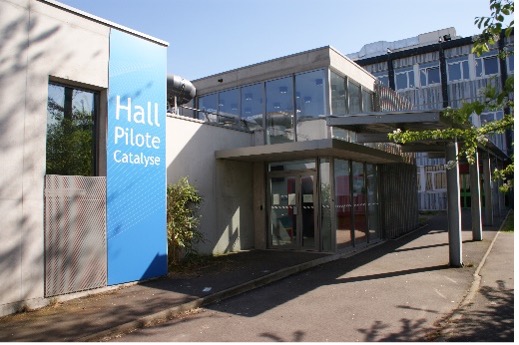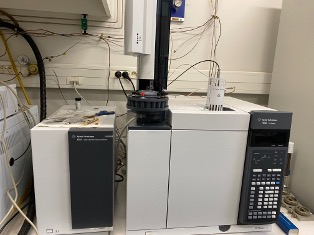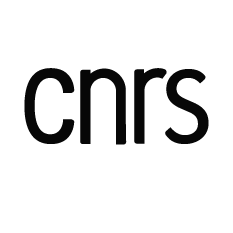Catalysis Pilot Hall
Scientific manager:
Pascal Blanchard
Technical manager:
Stéphane Chambrey
Contact :
Presentation
The Catalysis Pilot Hall is a high-tech platform which aims to host in a highly secure environment experimental devices for the study of catalytic reactions in pre-industrial conditions. Research work concerns the promotion of fossil and renewable resources integrating the transformation of products derived from biomass, the recovery of CO2, biogas and waste.
This platform comprises 10 pilot units equipped with reactors of multiple technologies (fixed bed, Mahoney-Robinson tank, Zipperclave reactor, etc.) and coupled with high-performance analytical devices. Other equipments available offline provide access to the identification and assay of sulfur species. Laboratory personnel is authorized to use the various analytical tools hosted by the Catalysis Pilot Hall after agreement from the scientific and technical managers of the building and after having completed a specific training period from qualified personnel.
The study of the performance evaluation of catalysts in heterogeneous and homogeneous catalysis is developed within the framework of industrial partnerships but also within the framework of institutional research projects, i.e. ANR projects and European research projects.
For a detailled description of the Catalysis Pilot Hall, download the dedicated flyer

Remarkable Equipments
Gas chromatography coupled with sulfur and nitrogen chemiluminescence detectors allows rapid, sensitive and selective analysis of the sulfur that may be present in various feedstocks and petroleum products such as gasoline, marine fuels or natural gas.
The samples (sulphur and nitrogen) eluted after separation on a chromatographic column will undergo a combustion reaction (oxidation and reduction) at 800°C to form SO and NO radicals. These compounds are then directed to a reaction chamber where they will react with ozone to form the oxidized species NO2 and SO2, thus generating an emission of light recovered by a photomultiplier. The amount of light formed is directly proportional to the amount of sulfur or nitrogen species.
The detectors are sensitive only to sulfur and nitrogen species and can selectively detect traces of compounds (ppb) in complex sample matrices.
The platform has a GC-SCD/NCD for the analysis of effluents from hydrotreatment reactions and a GC-SCD for the analysis of the products of the oxydesulfurisation of marine fuels.


